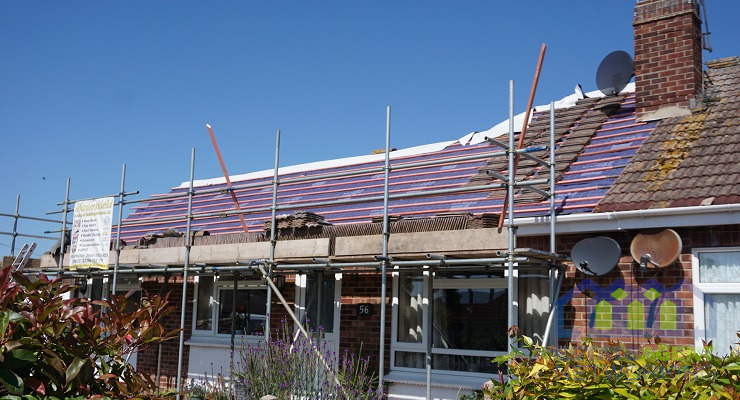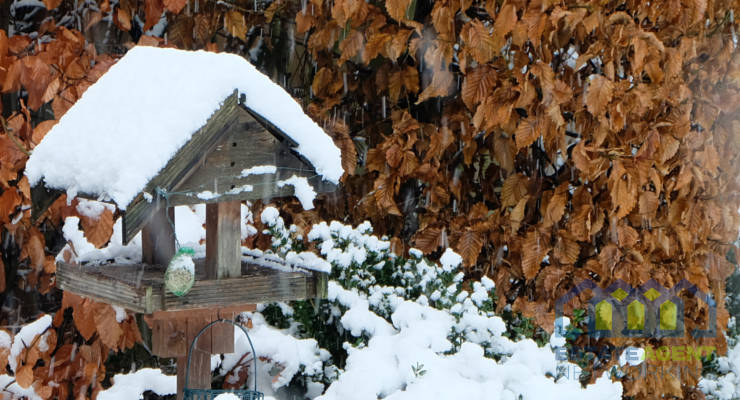6 Signs That Your Roof Needs Repair or Replacement
Similar to the external face of your house walls, your roof is also constantly exposed to the external environment — which includes everything from harsh sunlight, rain, debris, and even insects. The purpose of the roof is to protect you from the impact of all those things.
This exposure leads to severe wear and tear overtime, which can compromise its integrity. And ultimately, risk you and your loved ones. Hence, it is necessary to recognize the signs of roof deterioration early on and take action as soon as possible.
Given that, here are six key indicators that signal your roof may be in need of repair or replacement.
1. Sunlight through the Roof
One of the most apparent signs that your roof is in need of attention is the presence of sunlight seeping through the roof boards. If you notice daylight filtering into your attic, it indicates that there are gaps or holes in the roof — which is allowing not only sunlight but also water to infiltrate your home.
Prompt action is crucial to prevent further damage to the structure and to maintain a weather-tight seal.
2. Leaking Ceiling
Perhaps one of the most urgent and visually alarming signs of a compromised roof is the presence of a leaking ceiling. A leaking ceiling not only hints at water intrusion but also raises concerns about potential structural damage and mold growth. These leaks often appear as water stains or damp spots on your ceiling.
Addressing a leaking ceiling promptly is crucial to prevent further deterioration and safeguard your home. Ignoring this sign can lead to not only costly repairs but also potential health hazards associated with mold growth. In such situations, we highly recommend seeking professional assistance, especially if you reside in an area prone to heavy rainfall or storms like Perth.
Also, when seeking professional roof repairs around Perth, make sure you opt for a service with proven background and one that offers guarantee for its services. Since conducting a review session maybe difficult at the time of leakage, it’s best to do so earlier and keep reference of a trusted contact beforehand.
3. Presence of Moss or Mold
The third possible issue is the growth of moss or mold on your roof. It is not only an aesthetic concern; it can also be a sign of underlying issues.
Moss tends to thrive in damp and shaded areas, and its presence can indicate excess moisture on your roof. Mold, on the other hand, can pose health risks to occupants. If you observe the growth of moss or mold, it’s advisable to have your roof inspected to identify and address the root cause.
4. Missing, Cacked, or Curling Shingles
Shingles serve as the first line of defense against the elements. If you notice missing, cracked, or curling shingles, your roof’s ability to protect your home is compromised.
These issues may result from aging, storm damage, or poor installation. Regularly inspect your roof for damaged shingles, and if you find any, consider repairing or replacing them to maintain the structural integrity of your roof.
5. Roof is At Least 20-30 Years Old
Another significant sign that your roof may be in need of attention is its age. The lifespan of a typical asphalt shingle roof ranges from 20 to 30 years.
As your roof approaches this age bracket, it becomes more susceptible to wear and tear. Even if there are no immediately visible signs of damage, the overall effects of weather exposure and the aging process may compromise its effectiveness in shielding your home.
If you’re not willing to spend on complete roof replacement, you can consider roof inspection and roof restoration services — which are much less costly than the entire roof replacement.
6. Shingle Debris in Gutters
During your regular gutter maintenance, keep an eye out for shingle debris. If you find granules or pieces of shingles in your gutters, it could indicate that your roof is experiencing advanced wear.
Shingle granules protect your roof from the sun’s UV rays, and their loss can accelerate the aging process. If you notice an increased amount of shingle debris, consult with a roofing professional to assess the extent of the damage.
FAQs
How do you know if your roof is damaged?
Look for visible signs such as missing, cracked, or curled shingles, which can indicate weather-related damage. Alternatively, check for interior signs like water stains, mold growth, or peeling paint on ceilings, suggesting a potential roof leak.
What is the most common roof damage?
The most prevalent roof damage is often caused by weather elements, including wind, rain, hail, and snow. Other common roof damages include loss of shingles and cracks.
How do you test a roof?
Conduct a visual inspection for signs of damage, including sagging areas, damaged shingles, or debris accumulation. Or utilize a moisture meter during a professional inspection to detect hidden issues like water intrusion or trapped moisture within the roofing materials.
End Note
In closing, remember that your roof is more than a shield; it’s an investment in your home’s longevity. Regular professional inspections and proactive maintenance not only ensure a secure shelter but contribute to energy efficiency, potentially lowering utility costs. So, safeguarding your roof means safeguarding your comfort, safety, and property value!









